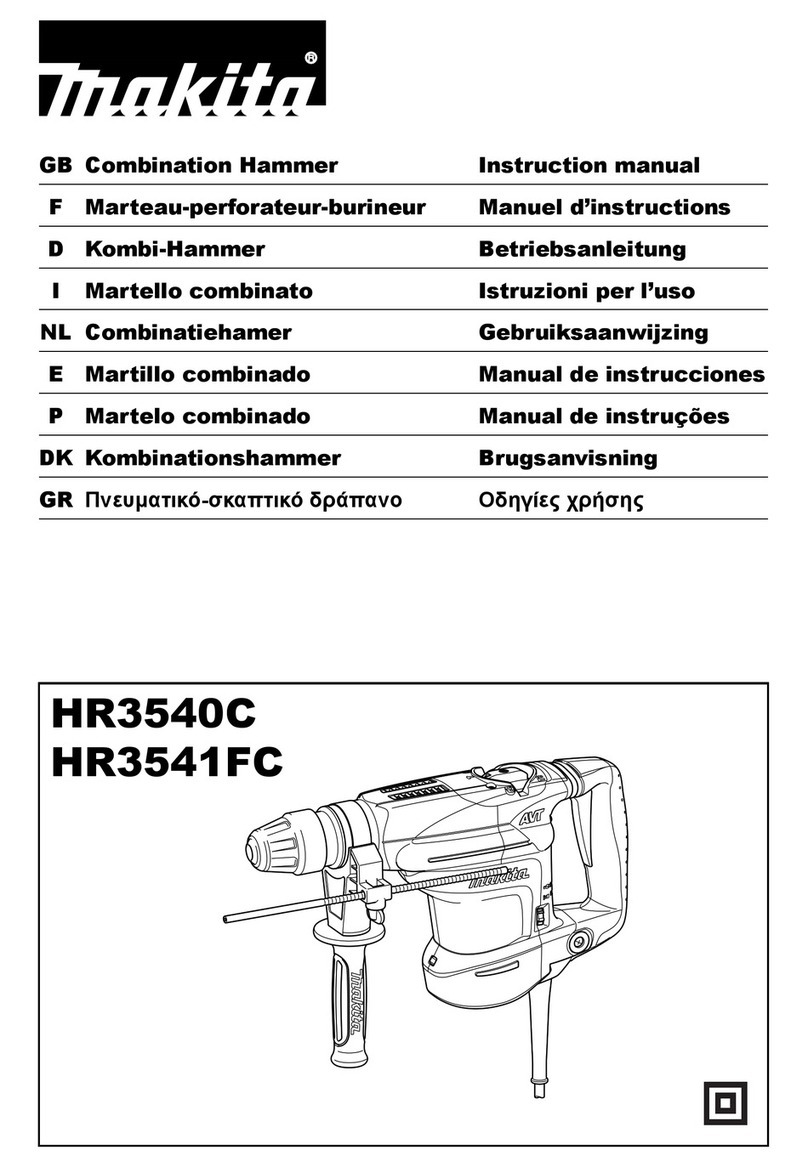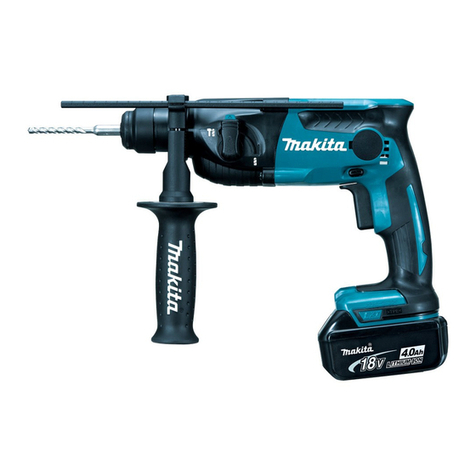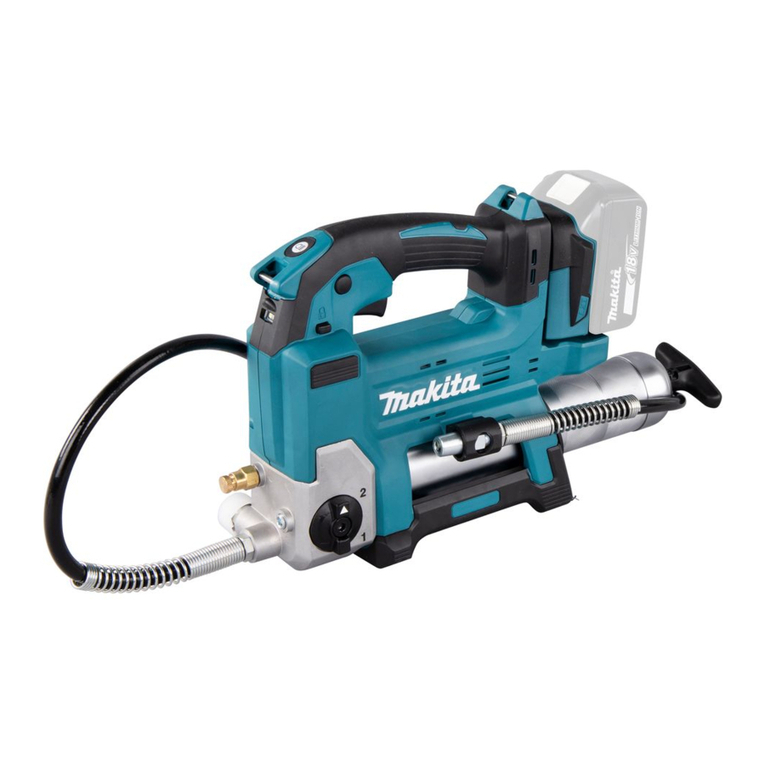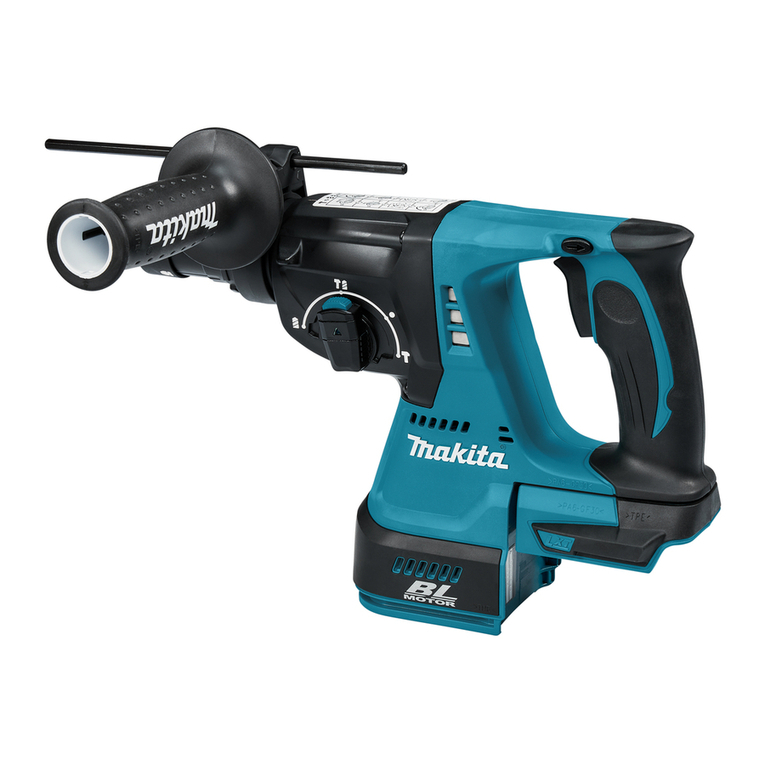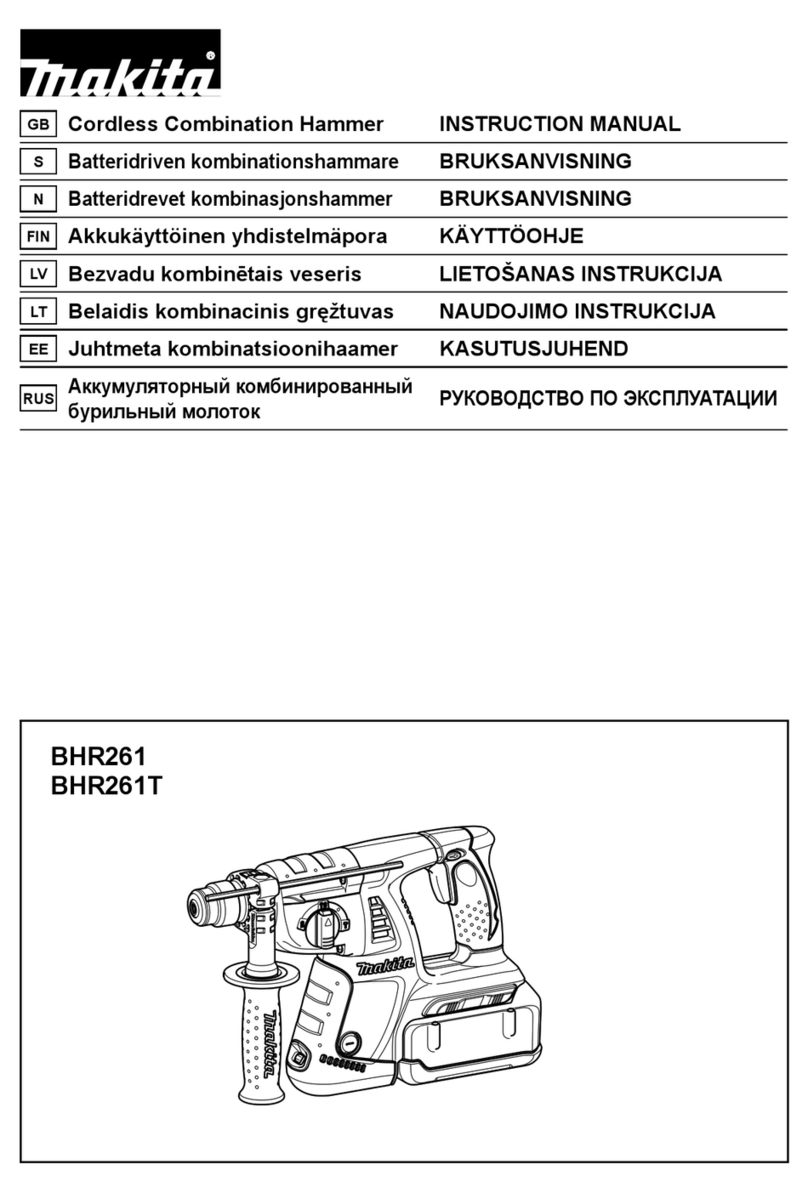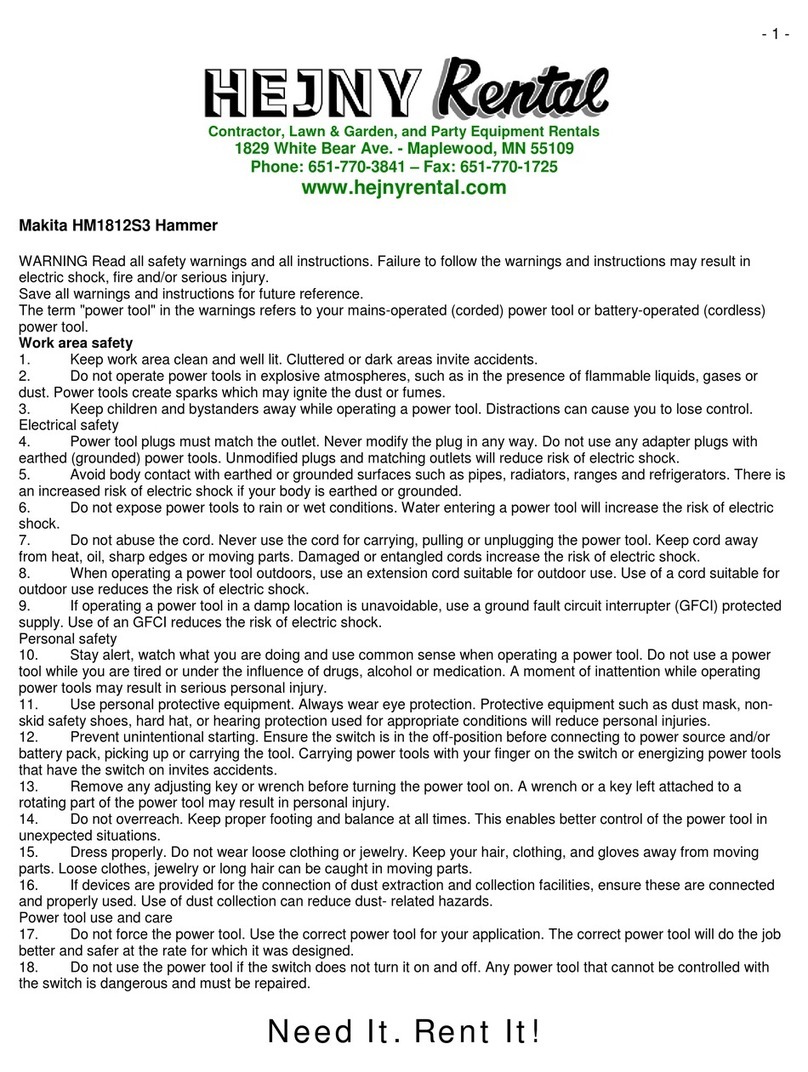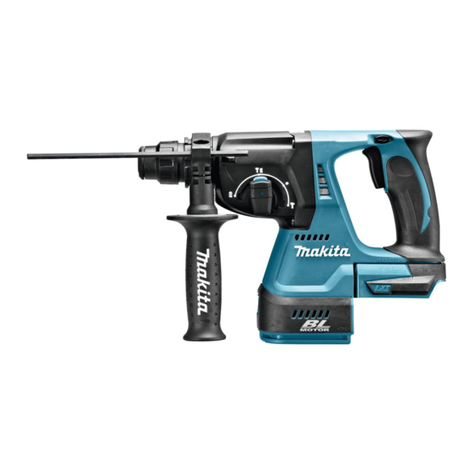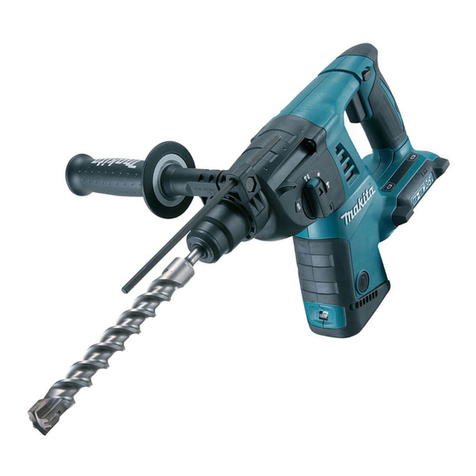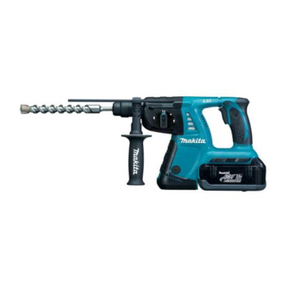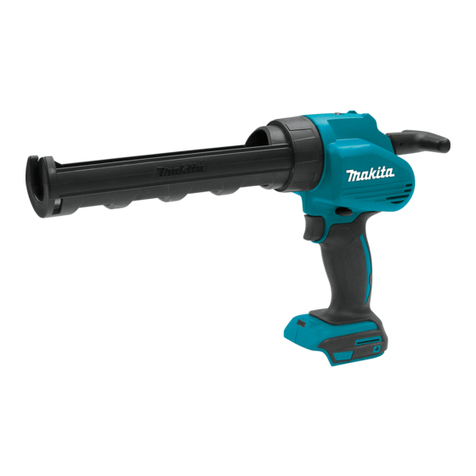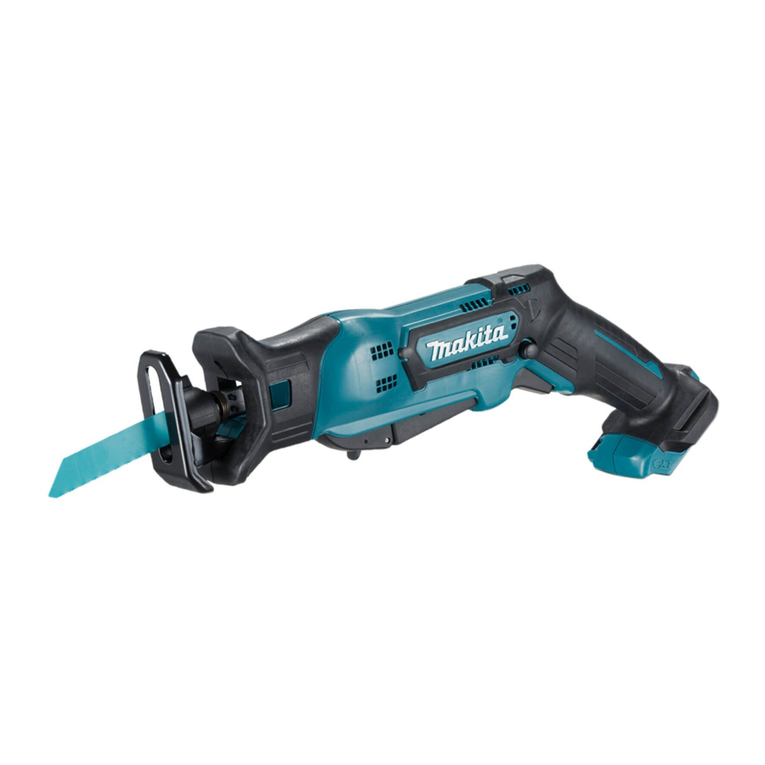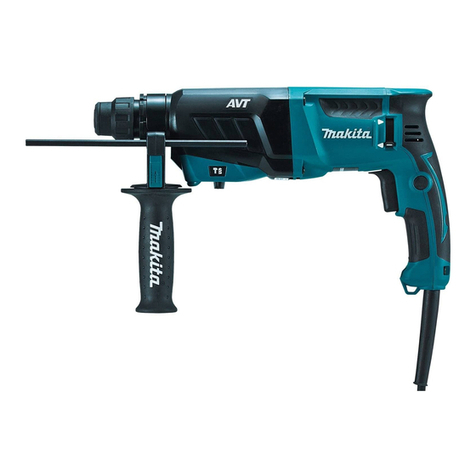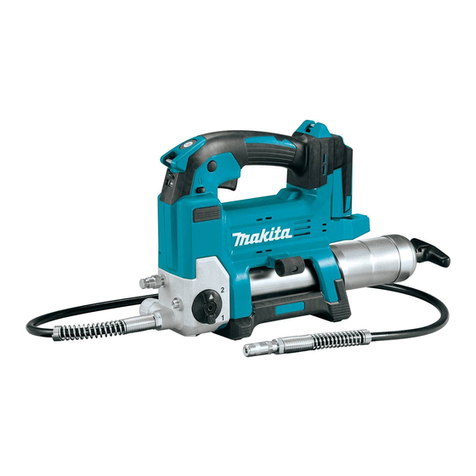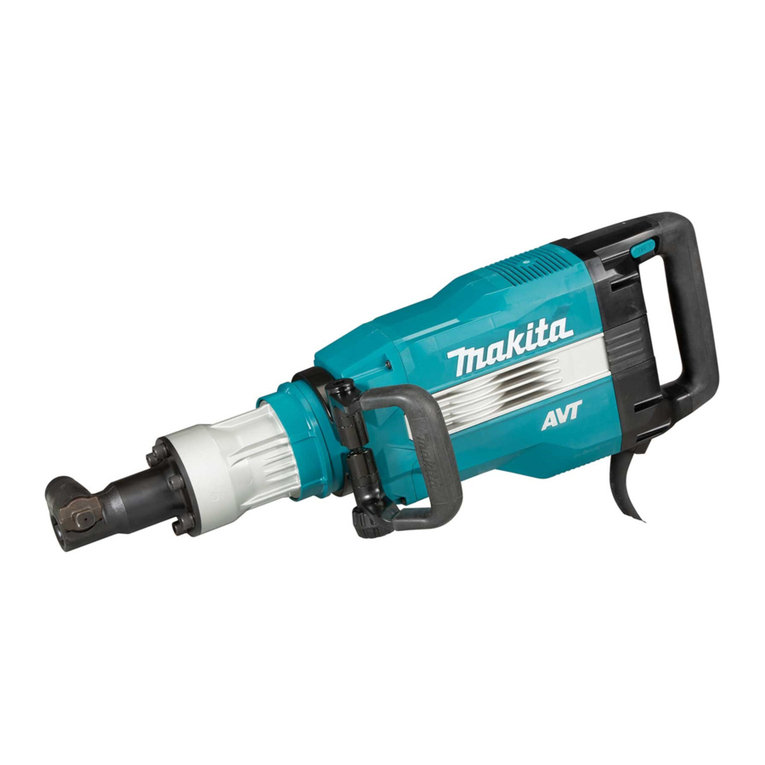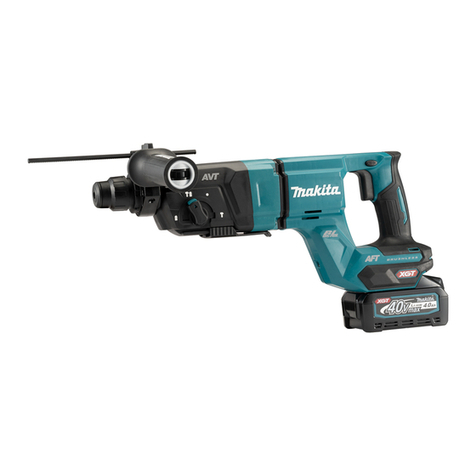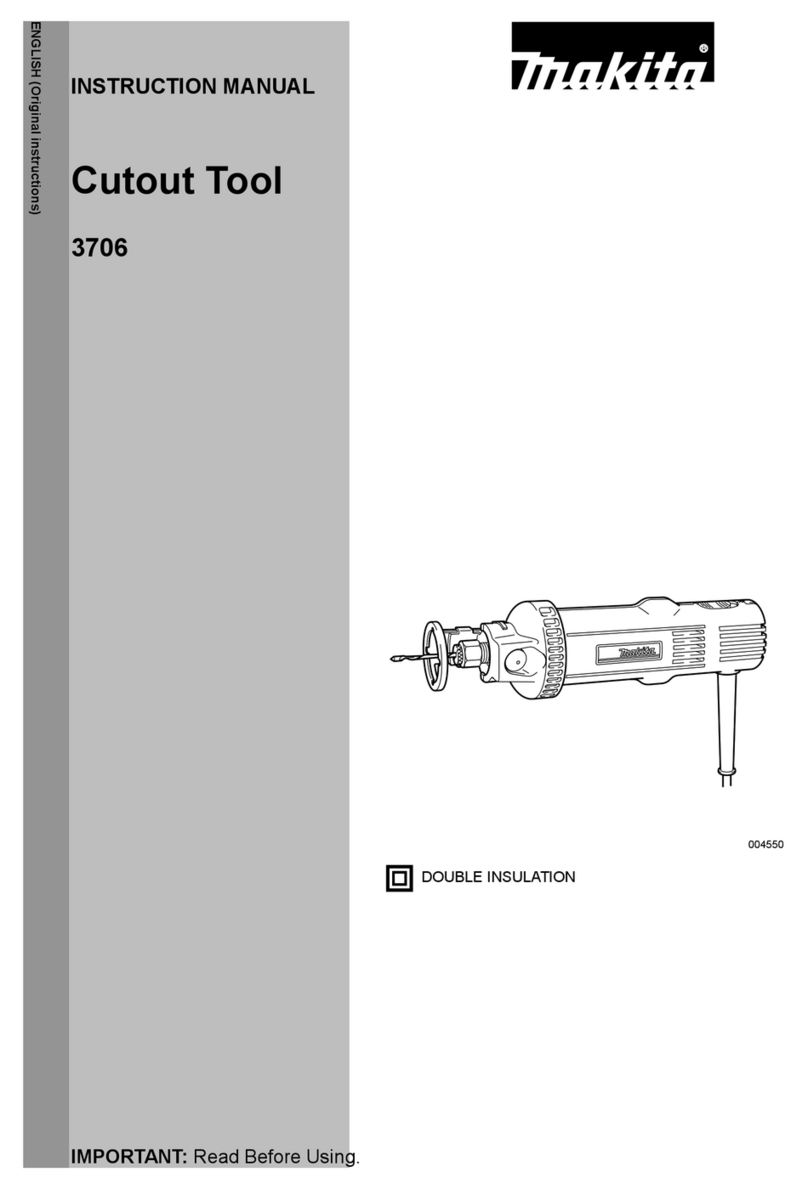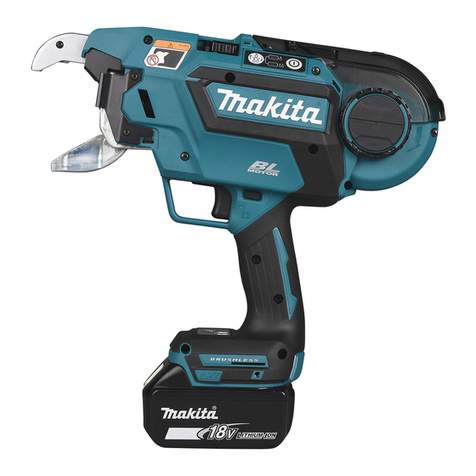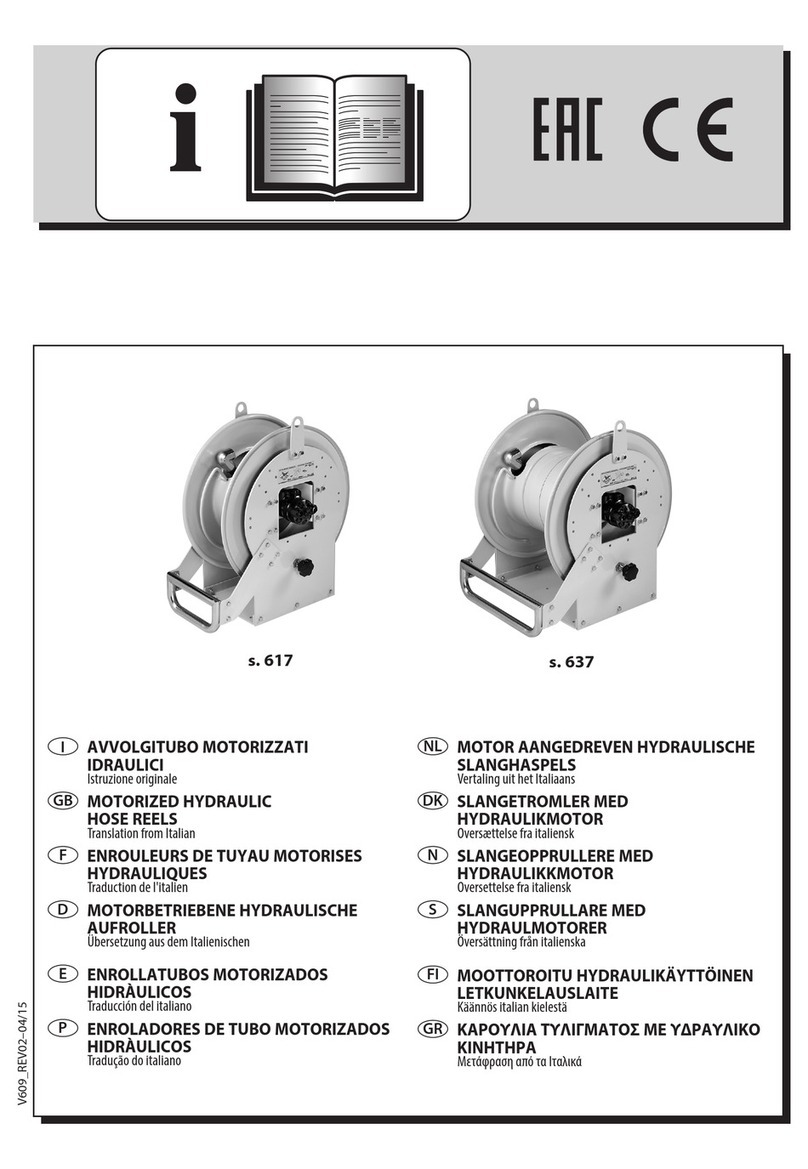
10 ENGLISH
5.
between idling and engagement speed to
ensure that the attachment is at a standstill
while the engine is idling (if necessary reduce
idling speed).
6. If the saw chain moves at idle, stop the engine
and adjust the idle speed down.
Operation
1.
tool immediately.
2. If you notice any unusual condition (e.g. noise,
Do not use the tool until the cause is recog-
nized and solved.
3. The saw chain continues to move for a short
to contact the saw chain.
4. During operation, use the shoulder harness.
5. Hold the front grip or front handle with your
left hand and the rear grip or rear handle with
your right hand, no matter you are right-hander
around the grips or handles.
6. Hold the tool by insulated gripping surfaces
only, because the saw chain may contact hid-
den wiring. A saw chain contacting a “live” wire
may make exposed metal parts of the extend-
ed-reach pruner “live” and could give the operator
an electric shock.
7. Never attempt to operate the tool with one
hand. Loss of control may result in serious or
fatal injury. To reduce the risk of injury, keep
your hands and feet away from the saw chain.
8. Do not overreach. Keep proper footing and
balance at all times. Watch for hidden obsta-
cles such as tree stumps, roots and ditches
to avoid stumbling. Clear fallen branches and
other objects away.
9.
Never work on a ladder or tree to avoid loss of control.
10. If the tool gets heavy impact or fall, check the
condition before continuing work. If there is
any damage or doubt, ask Makita authorized
service center for the inspection and repair.
11. Do not touch the head of the tool. The head of
the tool becomes hot during operation.
12. Take a rest to prevent loss of control caused
by fatigue. We recommend to take a 10 to
20-minute rest every hour.
13. When you leave the tool, even if it is a short
the battery cartridge or the spark plug cap.
The running and unattended tool may be used by
unauthorized person and cause serious accident.
14. When operating the tool, do not raise your
right hand above your shoulder height.
15. During operation, never hit the saw chain
against hard obstacles such stones and nails.
Take particular care when cutting branches
next to walls, wire fences or the like.
16. If branches get caught in the tool, always stop
the tool and remove the battery cartridge or
the spark plug cap. Otherwise unintentional start
17. If the saw chain becomes clogged, always
-
tridge or the spark plug cap before cleaning.
18. Accelerating the tool with the saw chain
blocked increases the load and will damage
the tool.
19. Before cutting limbs, keep an escape area
away from the falling limb. First, clear
obstructs such as limbs and branches from
the work area. Move all tools and goods from
the escape area to another safe place.
20. Before cutting branches and limbs, check
the falling direction of them, considering the
condition of branches and limbs, adjoining
trees, wind direction, etc. Pay full attention to
the falling direction, and the rebound of the
branch, which hit the ground.
21. Never hold the tool at an angle of more than
60°. Otherwise falling objects can hit the oper-
ator and cause serious injury. Never stand
underneath the limb being cut.
22. Pay attention to broken or bent branches. They
may bounce back in cutting, causing unexpected
23. Before cutting limbs that you intend to cut,
remove branches and leaves around them.
Otherwise the saw chain may be caught by them.
24. To prevent the saw chain from being caught in
the kerf, do not release the lever before pulling
the saw chain out of the kerf.
25. If the saw chain is bound in the kerf, immedi-
ately stop the tool, carefully move the branch
to open the kerf and release the saw chain.
26. Avoid kickback (rotational reactive force
towards the operator). To prevent kickback,
never use the guide bar nose or perform a
penetrating cut. Always beware of the position
of the guide bar nose.
27. Check the chain tension frequently. When
checking or adjusting the chain tension,
cartridge or the spark plug cap. If the tension
is loose, tighten it.
28. Pay attention to the environment. Avoid unnec-
essary throttle operation for less pollution
and noise emissions. Adjust the carburetor
correctly.
29. During or after operation, do not put the hot
tool onto dry grass or combustible materials.
Transport
1.
and remove the battery cartridge or the spark
transportation.
2. When transporting the tool, carry it in a hori-
zontal position by holding the grip or handle.
3.
4. When transporting the equipment in a vehicle,
properly secure it to avoid turnover. Otherwise,
fuel spillage and damage to the equipment and
other baggage may result.
